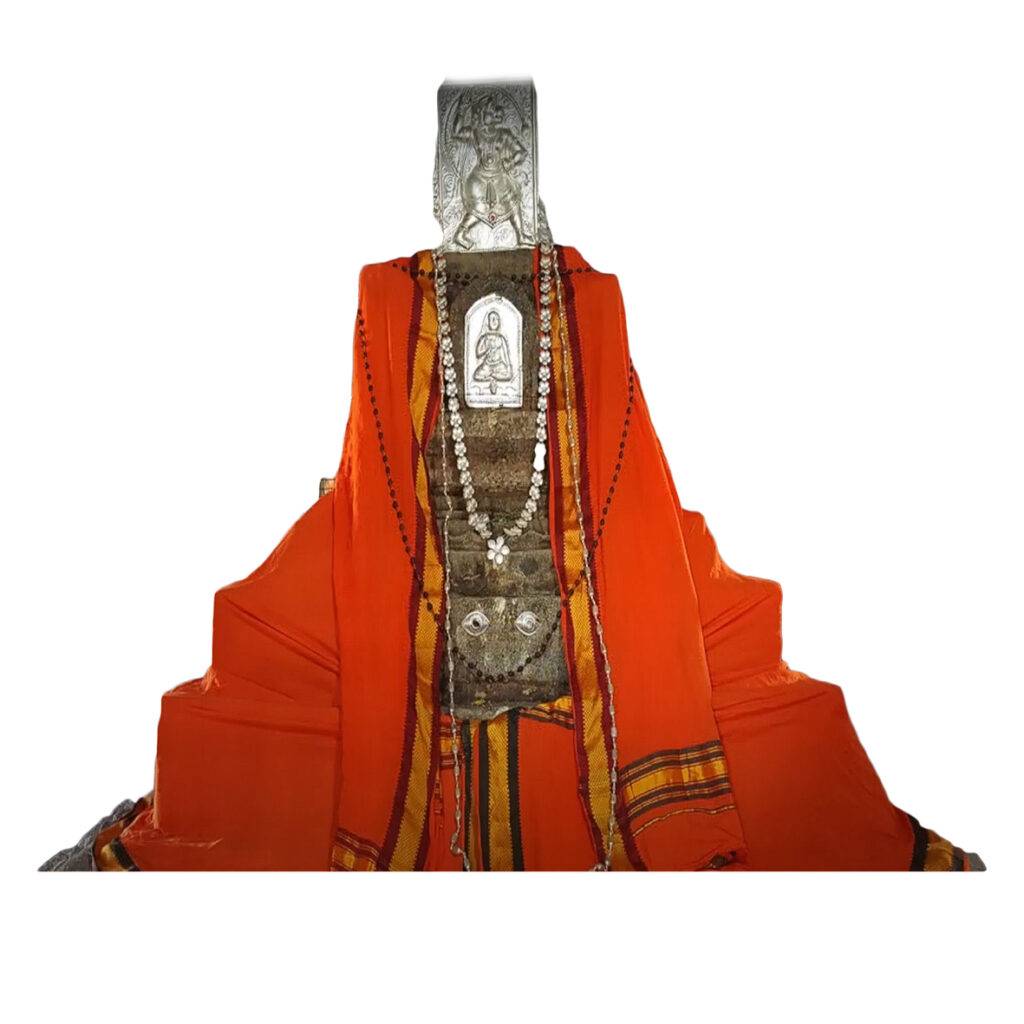

Tenure : 1584 – 1594
Ārādhana : Śrāvaṇa śukla saptamī
Location : Penukoṇḍa
Charama Shloka :
लक्ष्मीकांतगुरुं वंदे लक्ष्मणार्यमहं सदा |
रक्षितान् स्वेन कुर्वाणं लक्ष्मीशान् भिक्षुकानपि ||
ಲಕ್ಷ್ಮೀಕಾಂತಗುರುಂ ವಂದೇ ಲಕ್ಷ್ಮಣಾರ್ಯಮಹಂ ಸದಾ |
ರಕ್ಷಿತಾನ್ ಸ್ವೇನ ಕುರ್ವಾಣಂ ಲಕ್ಷ್ಮೀಶಾನ್ ಭಿಕ್ಷುಕಾನಪಿ ||
lakṣmīkāntaguruṃ vande lakṣmaṇāryamahaṃ sadā |
rakṣitān svena kurvāṇaṃ lakṣmīśān bhikṣukānapi ||

Śrī Lakśmīkānta Thirtha was ordained the 15th Pīṭhadhipati by Śrī Rāma Thirtha. Śrī Lakṣmīkānta Thirtha has the distinction of having been one of the few direct disciples of Śrī Vyāsarājaru in his Pūrvāśrama. Others being Śrī Śrīnivāsa Tīrtharu, Śrī Rāma Thirtharu and Śrī Śrīpatī Thirtharu. He belongs to Haritasa Gotra, Yajus Śākā, Aravattu Hokkalu, Śāsḥṭīka Vamśa. His Pūrvāśrama Nāma seems to have been one of the following three: Gopālakṛṣṇācārya, Veṇugopālakṛṣṇācārya or Vedavyāsācārya. He seems to have been a cabinet advisor to the Vijayanagara emperors till its demise in the Battle of Talikoṭta. At the advice of his guru Śrī Rāma Tīrtha, he assisted the relocation of the royal family from Hampi to Penukonda. Shortly afterward he was ordained to the fourth order Sanyāsāśarama and given the responsibility of the Pīṭha by Śrī Rāma Tirtha.
Subsequently, Śrī Svāmiji choose Penukonda not only for political reasons but also to continue serving the 360 Hanuman idols that were consecrated by Śrī Vyāsārāju. Historically, this place was a Jain stronghold even before the time of Vijayanagara empire. Śrī Vyāsarājaru acceded to the request of local scholars, camped for a year’s time here, debated and defeated the Jain scholars and re-established Sanātana Dharma. Tradition holds that Śrī Vyāsarājaru consecrated one Hanuman everyday idol to commemorate each victory and a Vidyāpīṭha as well in this place, that had become defunct. The responsibility of recommencing the Vidyāpīṭha was the other reason for SrI SwAmiji to choose this place where a few thousand students used to have their shastraic education.
Ślāgyākāraṁ Prakṛti Ruciraṁ Bhūtadośam Gunāḍhyam
Lakṣmīkāntaṁ Śirasi Kalayĕ Punyavad Bhāgadheye
Two adjectives have been used in the above Śloka to describe the Svāmiji’s qualities. The first on is ‘Bhūtadośam’ that describes his extreme affection and patronage of scholars irrespective of their affiliations. Scholars used to visit, exhibit their scholarship on scriptures and used to profusely get rewarded. It is known from tradition that the ‘Durbār’ event in the Śrīmaṭha had ceased past the time of Vyāsarājaru and was rejuvenated during His time, and it has continued till date. He was a great tapasvin and his blessings had the power to convert a pauper to affluence and reduce an arrogant one to become a pauper!
He is not known to have extensively travelled, perhaps indicative of the political turmoil at that time, but stayed put in this place for a period of ten years and imparted knowledge to quite a few monks of the fourth order, bidi Sanyāsins on advanced texts such as Vyāsatraya – Tātparya Candrika, Tarka Tānḍava and Nyāyāmruta. Tradition records that scholars used to recite Candrika at the time of his morning ablutions, Nyāyāmrutha during the time of Bikśā Svīkāra and Tarka Tānḍava during the time of Tŏṭṭilu Pūjĕ – in other words, there was a well-established system to ensure that various facets of Sanātana Dharma were practiced and appropriately compensated to ensure continuity. There are enough examples to prove that both spiritual and material benefits were accrued by sincerely performing Sĕvā at his Sannidhāna. The saint is accredited with the inheritance of the currently existing Bal̤ganāḍu sect of Mādhva followers.
Post the Vṛndāvana Praveśa of this Saint, Kambālūru Rāmacandra Tirtha performed his Cāturmāsya in 1626 AD in this very place. Later, Śrī Vidyāvallabha Tirtha seems to have visited this place
Brief note on the charama shlOka of the saint in the AshIrvachana of Śrīpādaru:
Lakṣmīkāntaguruṁ Vande Lakṣmaṇāryaṁahaṁ Sadā |
Rakṣitān Svena Kurvāṇam Lakṣeśān Bhikṣukānapi
There are two versions: Lakṣanāryaṁahaṁ and Lakṣmaṇāryaṁahaṁ. Śrīpādangal̤avaru has indicated that the latter is more appropriate and observed that the word has to be split as per grammatical rules as Lakṣmaṇārya + Mahaṁ. Lakṣmaṇārya is Lord Rāmā and Maha means to worship. Hence this can be interpreted as the Saint that worshipped Mūla Pattābhirāma whose blessings are capable of converting a pauper – Bhikśukān into a millionaire Lakṣeśan.
Note: This shloka as well as the charama shloka of Śrīpāti Tīrtharu (the saint’s successor) appears in the Nyāyasudhā Ṭippaṇi of Kambāluru Rāmacandra Tīrtharu.
Source - vyasarajamatha.org
| Math | Shri Vyasaraja Math, Sosale |
| Name of the Swamiji | Shri Lakshmikantha Teertharu |
| Period | 1584 - 1594 |
| Guru | Shri Rama Teertharu |
| Shishya | Shri Shreepati Teertharu |
| Poorvashrama Name | |
| Brindavan Located at | Penukonda |
| Aradana Month | Sravana |
| Paksha | Shukla |
| Tithi | Saptami |
